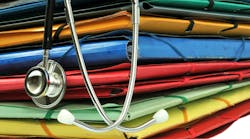New dental-medical coding program offers a path to certification
The demand for medical coders is at a historic high. Fueled by the health-care needs of an aging “baby boomer” population, the U.S. Bureau of Labor Statistics lists medical coding among the 20 fastest growing occupations, with job opportunities for professional coders projected to grow 18.2% by 2028.1
The dental-medical connection
With increased knowledge of the effects of oral cavity conditions on other parts of the body, we are seeing more medical billing in dental than ever. Baby boomers now have increased access to dental coverage through Medicare Advantage Plans, through both dental and medical plans. Additionally, many dental plans now offer more visits to the dental office for patients with high-risk medical issues such as diabetes. Measures like these reflect a growing understanding that patients can stay healthy and live longer lives with these added visits.
The hard-won lessons of the pandemic have brought even more attention to the systemic links between dental and medical health. After a year of daily news relating to disease transmission and infections, the understanding and need for medical billing in dental practices has become a standard that most patients recognize and expect. On the Dental Medical Billing website, an added section where dental offices that are trained in medical billing can advertise has proven to be an immensely popular resource.
Collaboration is key
There are also a growing number of courses, books, and articles about dental-medical systemic issues, such as Balance: A Guide to Managing Dental Caries for Patients and Practitioners by V. Kim Kutsch, DMD, and Robert J. Bowers. One key takeaway from the literature is that high-risk patients without dental plans or in need of extended treatments may require medical intervention in the form of prescription/professional oral treatment and collaboration between dental and medical practitioners.
Having worked in both dental and medical—and seeing a growing need to bridge some gaps between the two—I have decided to combine my knowledge to teach how to identify a medical billing patient and how to apply that knowledge to help patients live longer, healthier lives. Personal experience has also helped inform my decision: My daughter takes five medications a day, all of which dry her oral cavity and raise many areas of concern including the increased risk of oral cancer.
The first-ever dental-medical coding credentialing program
As a result of these factors, I recently put together a series of credentialing courses. Although I have trained thousands of dental teams over the years to do dental-to-medical cross-coding, it has always struck me that there have been no certified credentialing programs to recognize this important skill set in dental professionals. I, of course, hold contracts with both the ADA and the AMA to teach the codes and use them in course materials through my company, Dental Medical Billing. I have partnered with QPro and Find-A-Code to write the new credentialing courses from books that have been cleared by both organizations.
The credentialing exams are hosted and administered by Qpro, a leading product solution-suite of medical training and certification for qualified medical professionals. To earn the dental-to-medical billing credentials, candidates must pass at least three exams including the requisite Qualified Medical Coder/Biller Exam. From there, candidates can earn designations in nine specializations, such as dental implant coding, oral surgery, sleep apnea, sedation dentistry, and coding and reimbursement for CBCT scans.
These credentials represent the gold standard in medical coding, billing, auditing, documentation, compliance and practice management, and are nationally recognized by employers, medical societies, government organizations and hospitals to bring a higher rate of payments due to the knowledge of the coder.
The impact of credentialed front office staff
Many practices which find themselves adding in treatments that can be billed to medical can benefit from this higher level of education. These courses will enrich the practice—not just by maximizing reimbursements and avoiding costly compliance mistakes, but also by increasing the access and affordability of treatments that patients may not otherwise consider. Many providers now seek a team member with these skills to handle their billing, but also see the value of having someone on the team with the training to identify medical billing candidates. Knowledge is powerful.
These courses will also prepare professionals for positions in hospitals with oral surgeons, or in the new type of practice that specializes in evaluating patients for clearance prior to surgery. Just think about the amount of medical that has become part of dental practices today: CBCT scans, oral saliva tests, and now vaccines and tests for COVID-19. I expect the presence of medical to continue to grow in importance for dental practices, especially since many patients responding to surveys have indicated the desire for one insurance plan that covers all treatments.
Author's note: To learn more about the new certified dental-to-medical biller credential program please visit: dentalmedicalbilling.com/credentials-program.
REFERENCE
1. Working in the industry. Medical Billing and Coding. https://www.medicalbillingandcoding.org/working-in-mbac/







